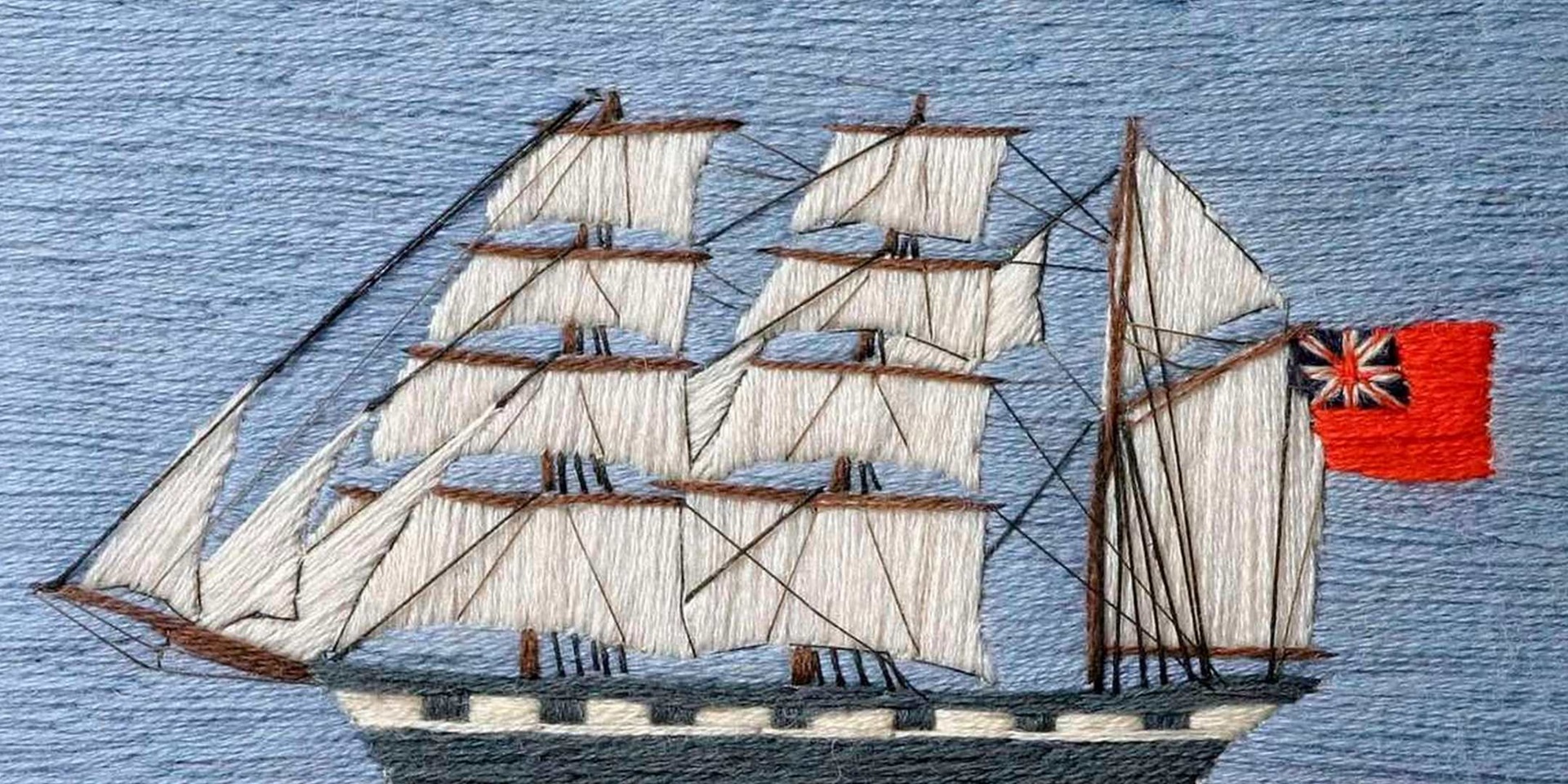
Sailor’s woolwork picture of the convict transport Mermaid, 1870s. ANMM Collection, 00004596
Last week I started exploring the fascinating intersection between needlework, craft and maritime history in the museum’s collection, examining an embroidered sampler made by young British migrant Julia Donovan in 1879. Today I will be looking at the sampler’s first cousin – the sailor’s woolwork picture or embroidered ship portrait, affectionately known as a ‘woolie’.
Woolies were produced mainly by British sailors between the 1830s and early 1900s, reflecting the popularity of embroidery and other forms of needlework in the Victorian era. As sailors were accustomed to repairing sails, clothing and uniforms at sea, woolwork pictures were simply an extension of their fine needlework skills, helping them to pass the time on a long sea voyage.
The museum has a few examples of this engaging 19th-century handcraft in its collection, including one that depicts the 472-tonne convict transport Mermaid, which was built in Calcutta, India, in 1817. From 1828 it made several voyages to Australia, the last one being in 1851, when it transported 209 male convicts to the Swan River colony near Perth, Western Australia.
Close up of sailor’s woolwork picture of Mermaid, 1870s. ANMM Collection, 00004596
The woolie depicts Mermaid broadside, flying the Red Ensign, with the name of the ship embroidered in the calm sea below. The coloured wools are worked on a canvas backing, using long stitches to create a smooth, flat texture. The stitches are worked in a horizontal direction for the sea and sky, and a vertical direction for the ship’s sails, which helps to lift them from the plain background. While the overall effect is quite naïve and charming, the attention paid to the detail of the rigging (rendered with long straight stitches in a finer thread) indicates that it must have been the work of a skilled seaman.
The Mermaid woolie is a fine example of a distinctive nautical craft that emerged from the traditional skills of the sailor. Its significance is enhanced by its association with Australia’s early colonial history and the practice of convict transportation. The woolie represents a unique intertwining of craft and maritime history, with each stitch expressing something of the seaman’s individuality and personality. Coming up next time in our nautical craft series – a uniquely personal collection of model boats!
